Abstract
The effects of reserpine and imipramine on the concentration of indolyl compounds bearing an OR group in position 5 (5-OR indolyl compounds) in the cerebrospinal fluid and the caudate nucleus of the dog have been studied. Reserpine was shown to produce an increase in the concentration of these compounds in the cerebrospinal fluid. In the caudate nucleus reserpine produced a fall in the concentration of the basic 5-OR indolyl compounds accompanied by an equivalent increase in the concentration of acidic 5-OR indolyl compounds. No significant change in the concentration of 5-OR indolyl compounds in the cerebrospinal fluid was observed after treatment with imipramine.
Full text
PDF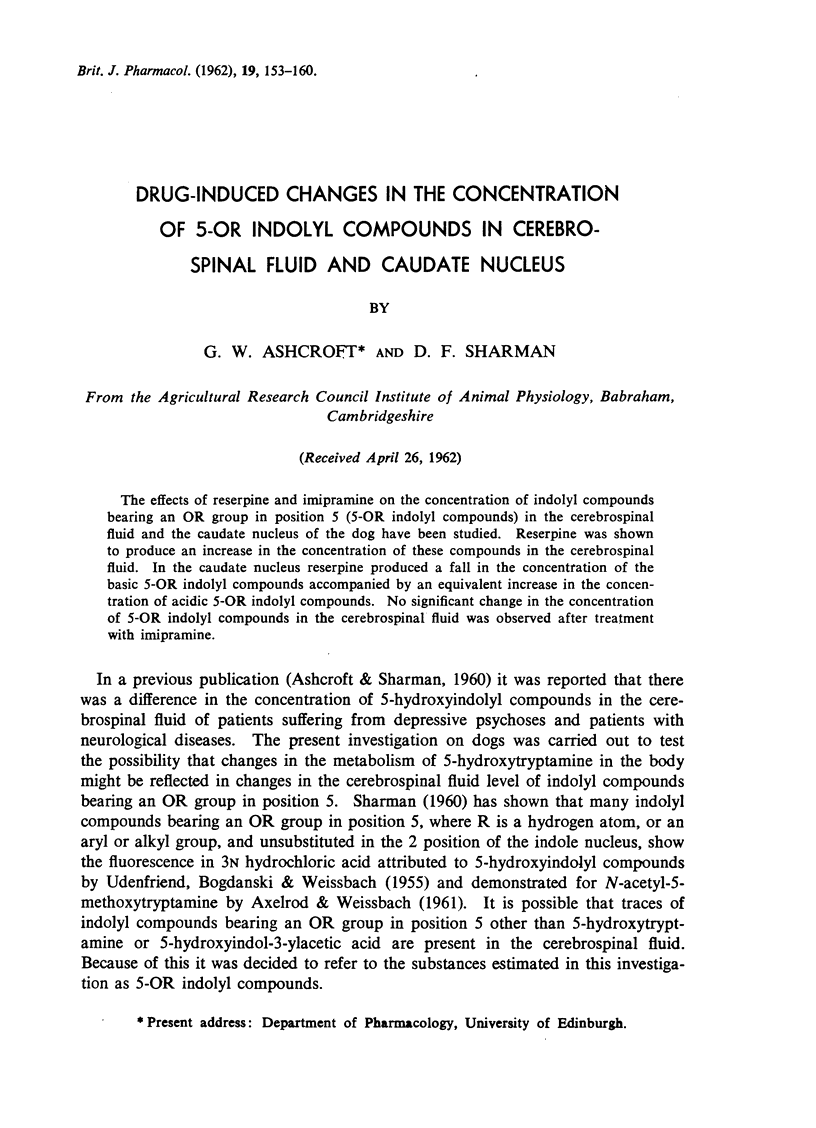
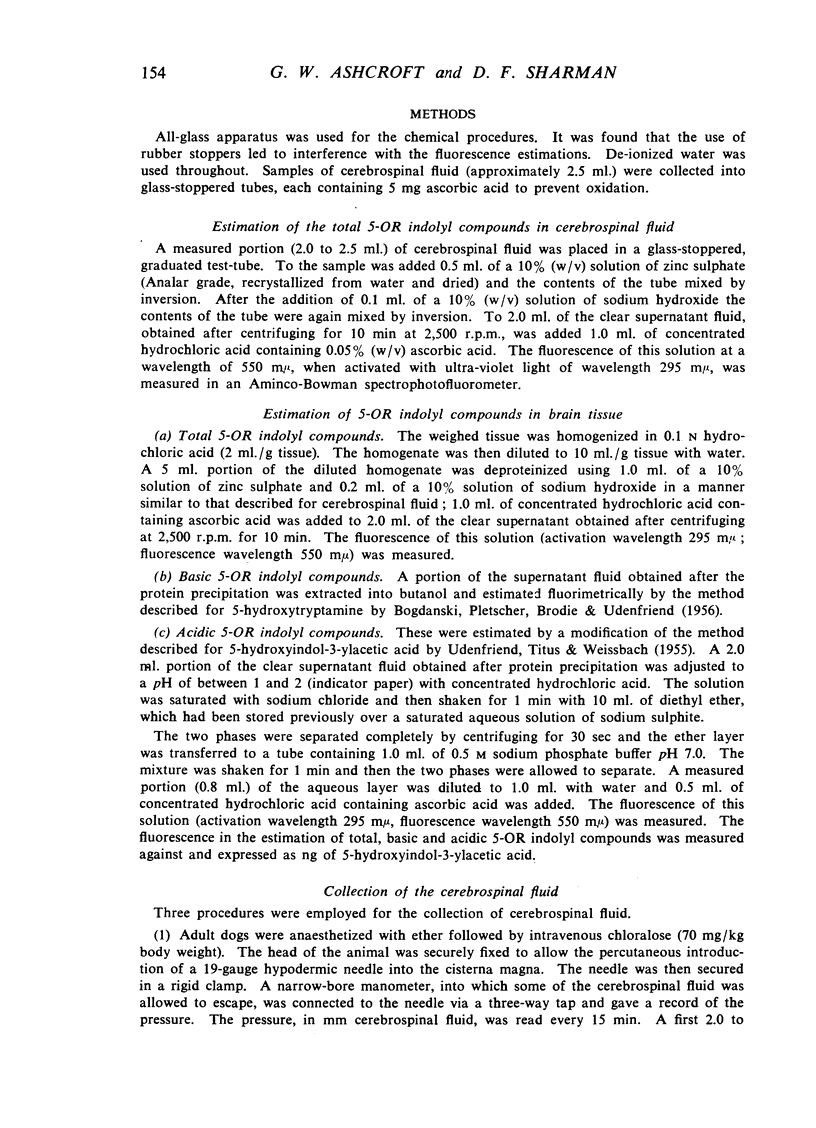
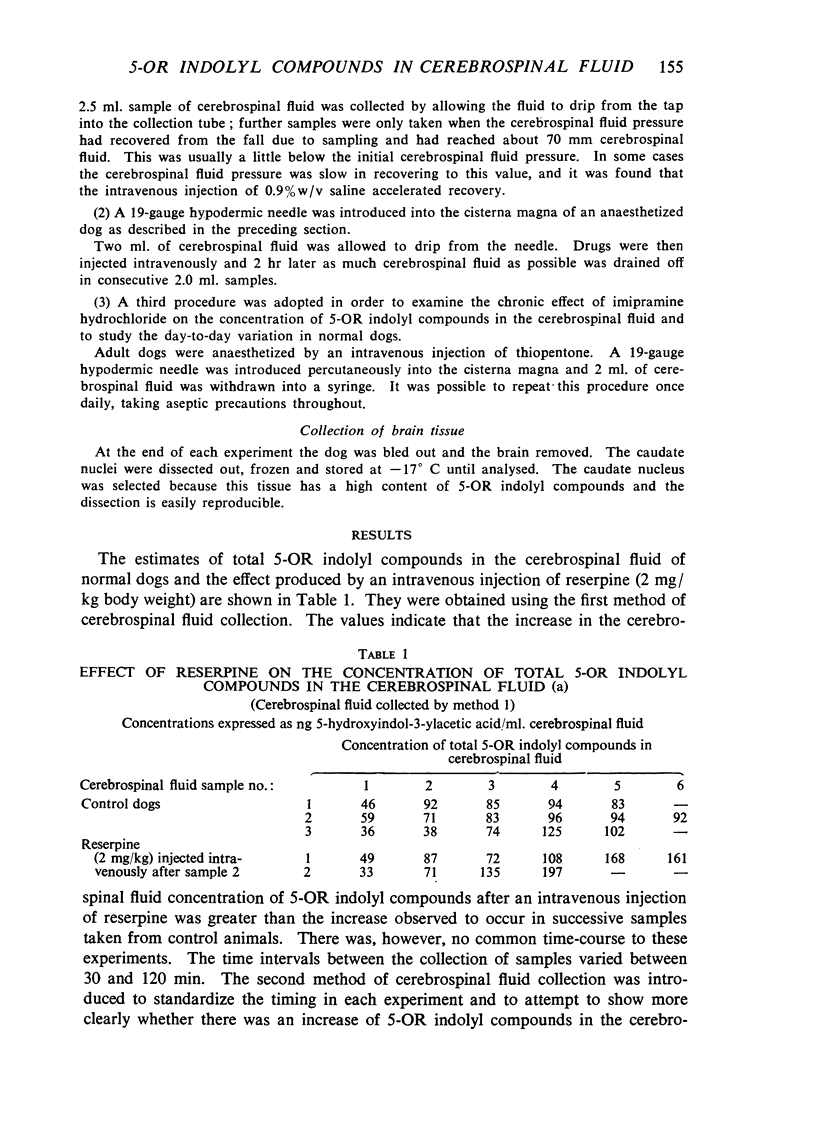
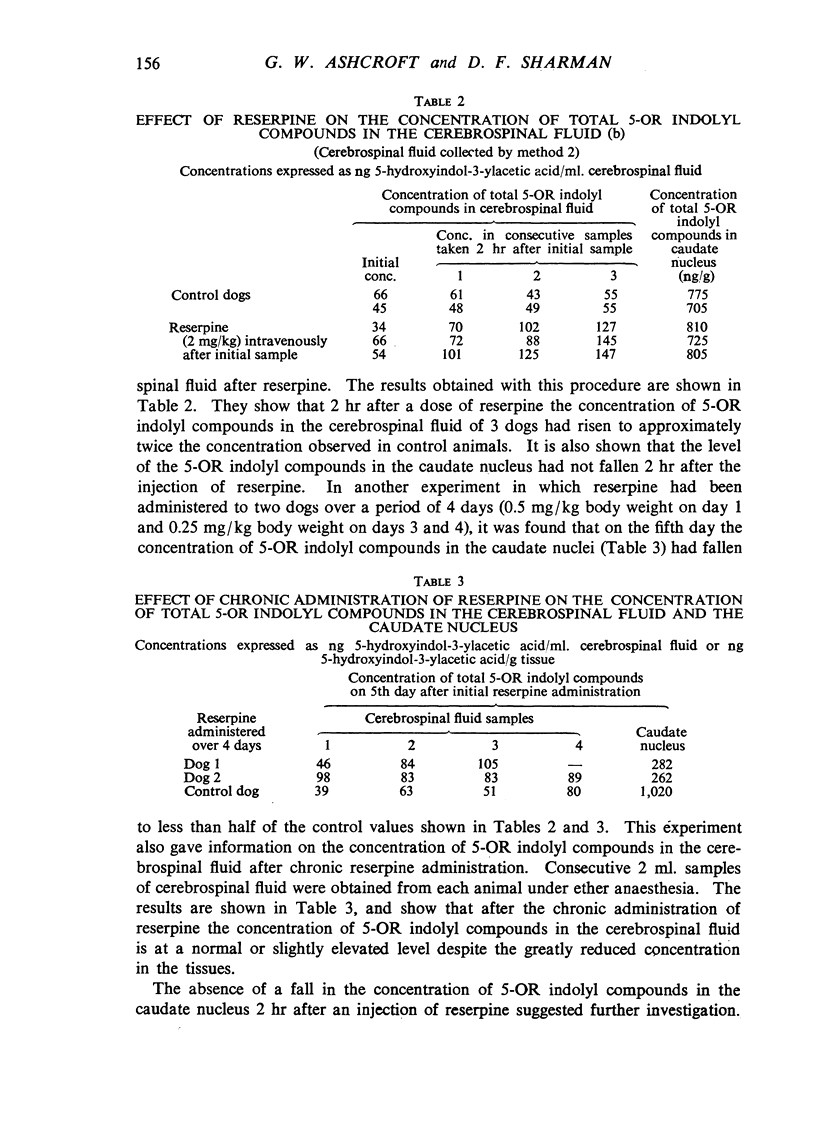
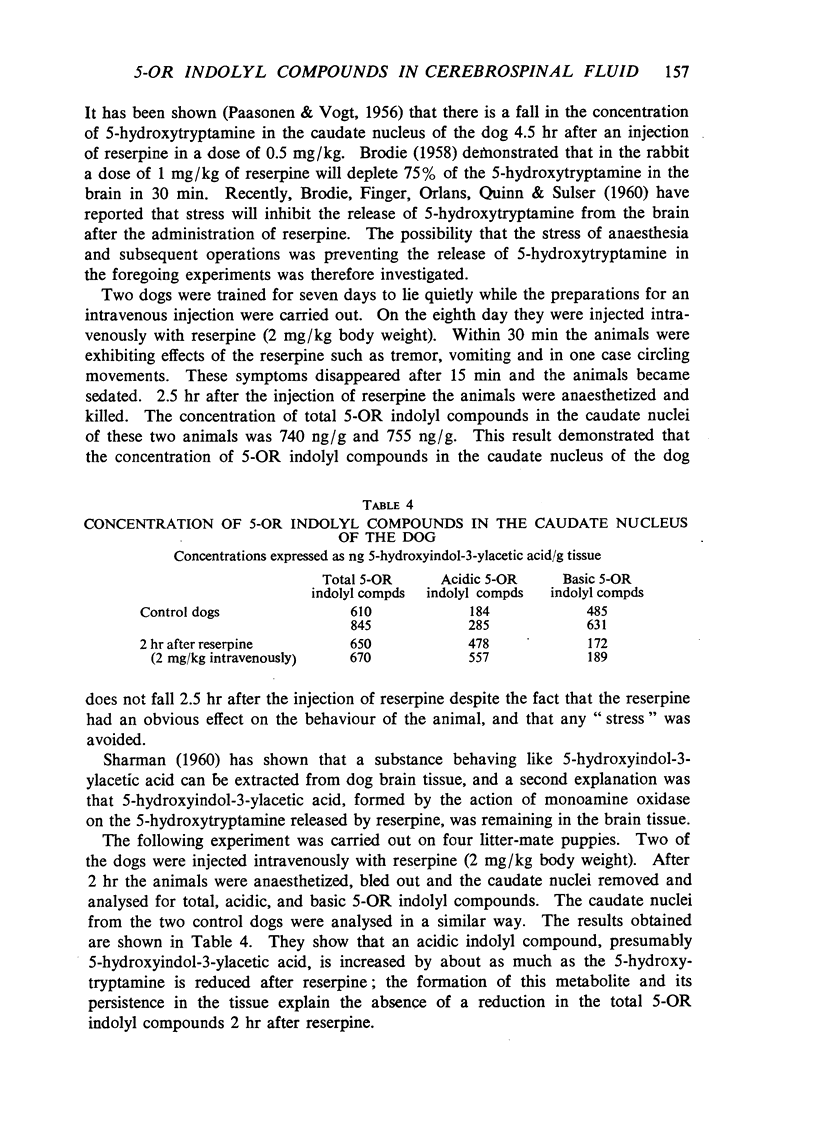
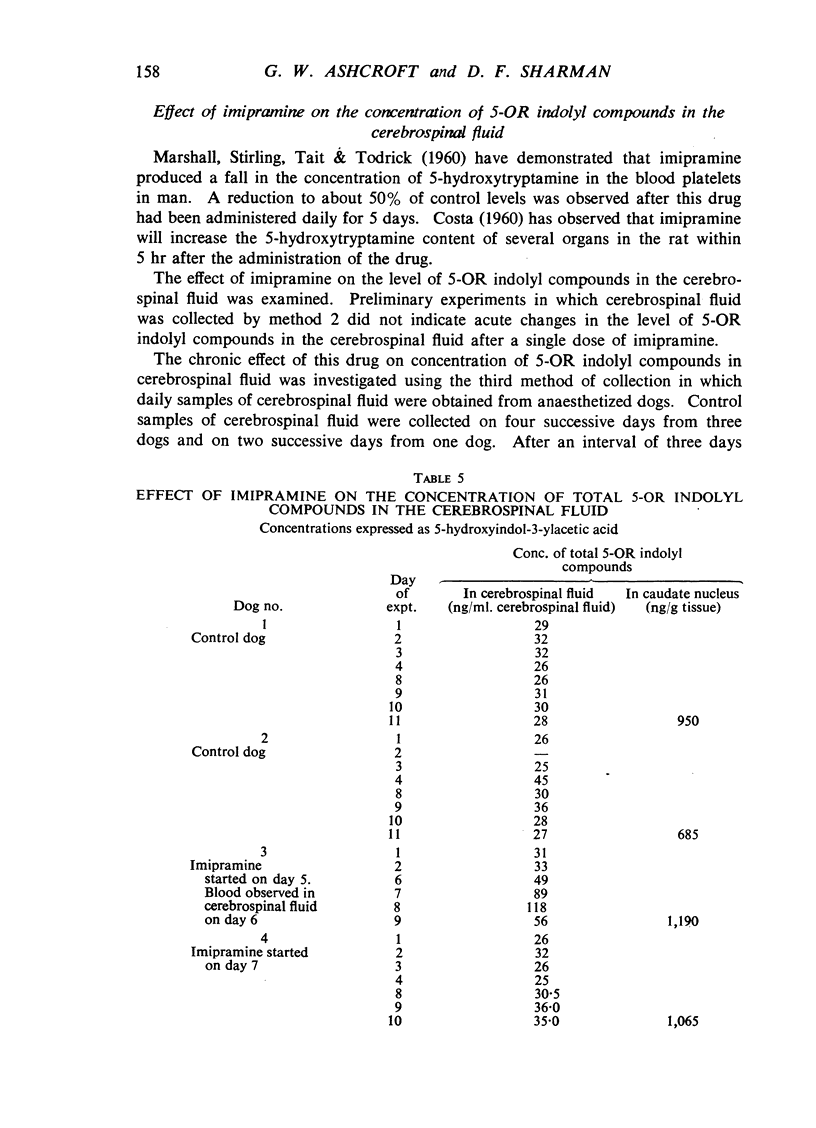


Selected References
These references are in PubMed. This may not be the complete list of references from this article.
- ASHCROFT G. W., SHARMAN D. F. 5-Hydroxyindoles in human cerebrospinal fluids. Nature. 1960 Jun 25;186:1050–1051. doi: 10.1038/1861050a0. [DOI] [PubMed] [Google Scholar]
- AXELROD J., WEISSBACH H. Purification and properties of hydroxyindole-O-methyl transferase. J Biol Chem. 1961 Jan;236:211–213. [PubMed] [Google Scholar]
- BOGDANSKI D. F., PLETSCHER A., BRODIE B. B., UNDENFRIEND S. Identification and assay of serotonin in brain. J Pharmacol Exp Ther. 1956 May;117(1):82–88. [PubMed] [Google Scholar]
- BRODIE B. B., FINGER K. F., ORLANS F. B., QUINN G. P., SULSER F. Evidence that tranquilizing action of reserpine is associated with change in brain serotonin and not in brain norepinephrine. J Pharmacol Exp Ther. 1960 Jul;129:250–256. [PubMed] [Google Scholar]
- COSTA E. The role of serotonin in neurobiology. Int Rev Neurobiol. 1960;2:175–227. doi: 10.1016/s0074-7742(08)60123-3. [DOI] [PubMed] [Google Scholar]
- MARSHALL E. F., STIRLING G. S., TAIT A. C., TODRICK A. The effect of iproniazid and imipramine on the blood platelet 5-hydroxytrptamine level in man. Br J Pharmacol Chemother. 1960 Mar;15:35–41. doi: 10.1111/j.1476-5381.1960.tb01207.x. [DOI] [PMC free article] [PubMed] [Google Scholar]
- PAASONEN M. K., VOGT M. The effect of drugs on the amounts of substance P and 5-hydroxytryptamine in mammalian brain. J Physiol. 1956 Mar 28;131(3):617–626. doi: 10.1113/jphysiol.1956.sp005486. [DOI] [PMC free article] [PubMed] [Google Scholar]
- UDENFRIEND S., BOGDANSKI D. F., WEISSBACH H. Fluorescence characteristics of 5-hydroxytryptamine (serotonin). Science. 1955 Nov 18;122(3177):972–973. doi: 10.1126/science.122.3177.972. [DOI] [PubMed] [Google Scholar]
- UDENFRIEND S., TITUS E., WEISSBACH H. The identification of 5-hydroxy-3-indoleacetic acid in normal urine and a method for its assay. J Biol Chem. 1955 Oct;216(2):499–505. [PubMed] [Google Scholar]


